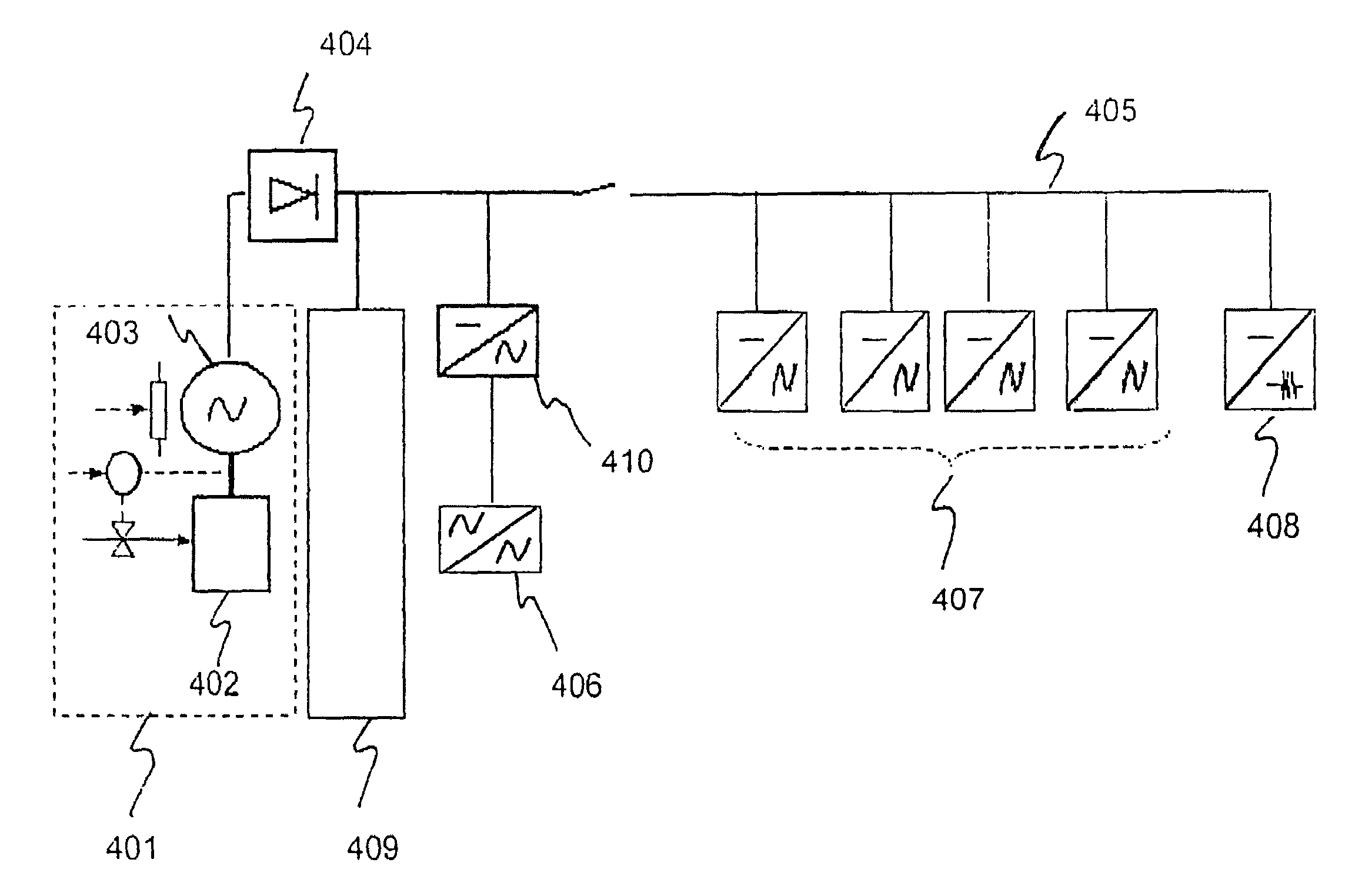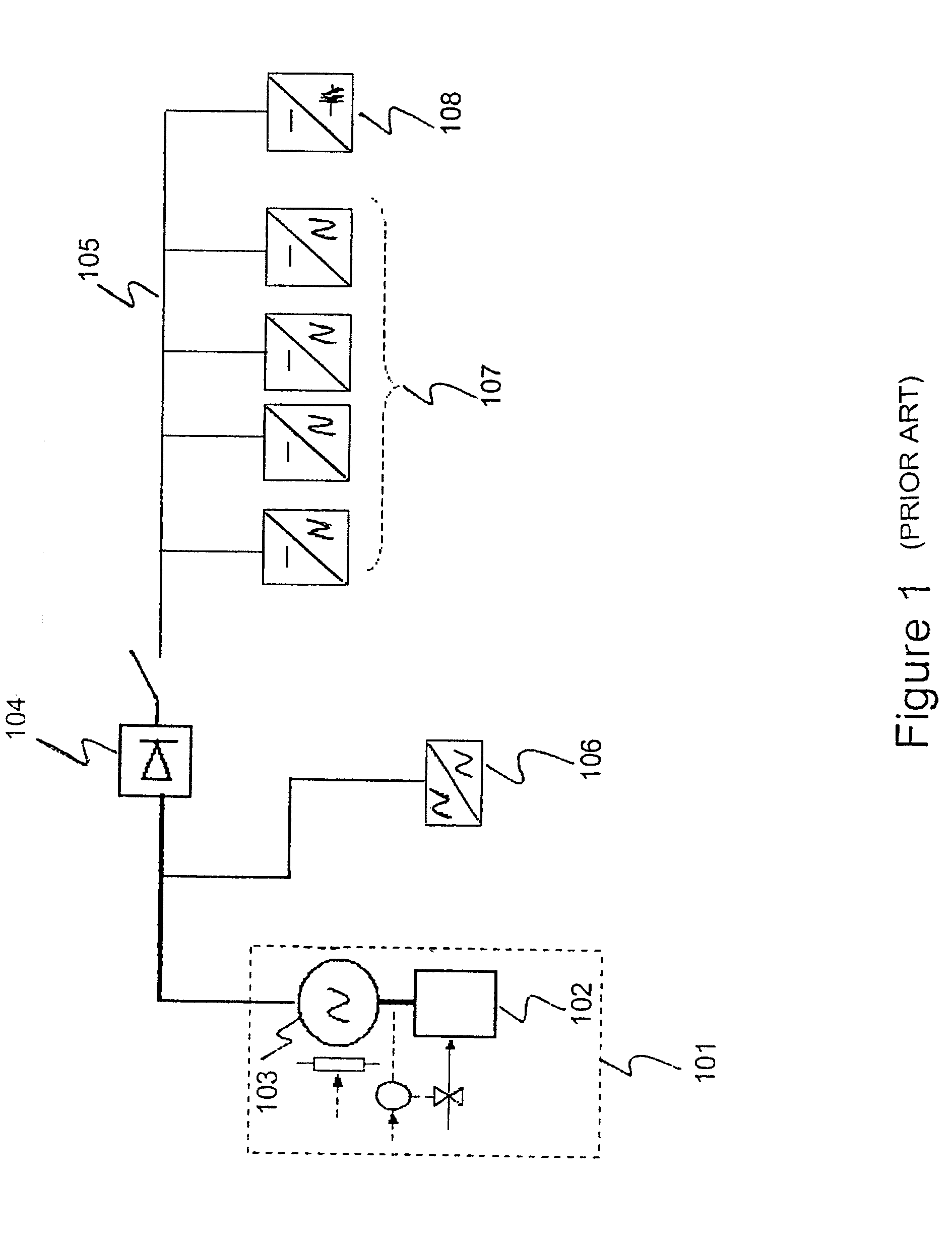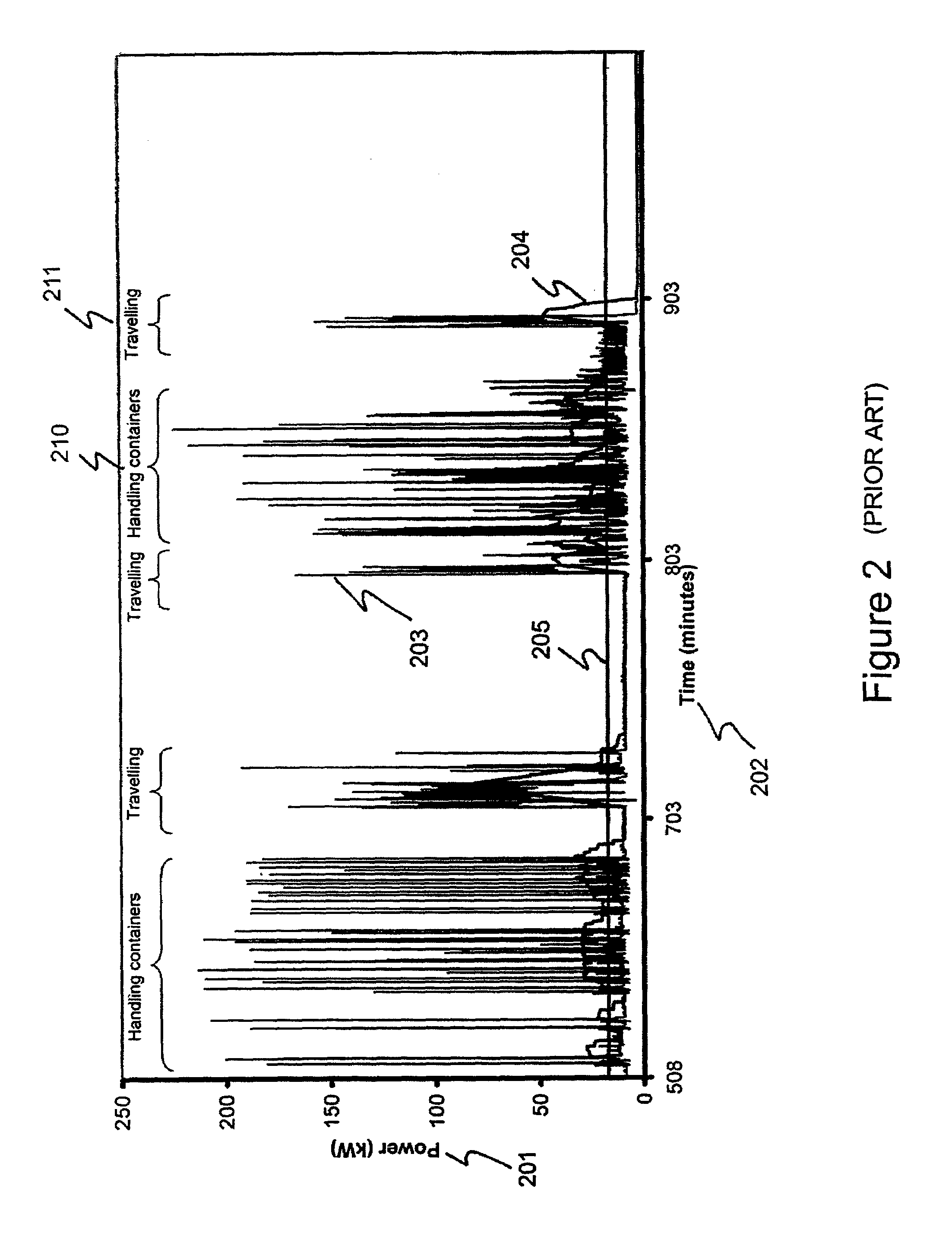Load-lifting apparatus and method of storing energy for the same
a technology of load-lifting apparatus and energy storage, which is applied in the direction of motor/generator/converter stopper, dynamo-electric converter control, elevator, etc., can solve the problems of reducing overall fuel efficiency, reducing fuel efficiency, and oversized diesel engines. , to achieve the effect of reducing noxious prime power emissions, increasing fuel efficiency, and operating quietly
- Summary
- Abstract
- Description
- Claims
- Application Information
AI Technical Summary
Benefits of technology
Problems solved by technology
Method used
Image
Examples
Embodiment Construction
[0064]FIG. 1 is a prior art schematic of a rubber-tired gantry crane power system. Prime power is provided by a diesel genset 101 which is comprised of a diesel engine 102 and an alternator 103 which converts mechanical power from the engine 102 to AC electrical power. AC power is available for the crane's auxiliary power systems 106 and is converted by rectifier 104 to DC power supplied to a DC bus 105 for distribution to operate electric motors 107 for propelling the crane and to carry out other crane operations such as traversing and, lifting and lowering. The crane may also have a dynamic brake capability 108 which allows the motors 107 to act as electrical generators providing a braking force while lowering a load. The electrical energy generated by the dynamic braking system 108 is typically dissipated in a resistive grid (not shown).
[0065]FIG. 2 is a graph showing a typical duty cycle of a prior art rubber-tired gantry crane. FIG. 2 shows power 201 versus time 202 for a porti...
PUM
 Login to View More
Login to View More Abstract
Description
Claims
Application Information
 Login to View More
Login to View More - R&D
- Intellectual Property
- Life Sciences
- Materials
- Tech Scout
- Unparalleled Data Quality
- Higher Quality Content
- 60% Fewer Hallucinations
Browse by: Latest US Patents, China's latest patents, Technical Efficacy Thesaurus, Application Domain, Technology Topic, Popular Technical Reports.
© 2025 PatSnap. All rights reserved.Legal|Privacy policy|Modern Slavery Act Transparency Statement|Sitemap|About US| Contact US: help@patsnap.com



